INSTALLATIONS
COMMA
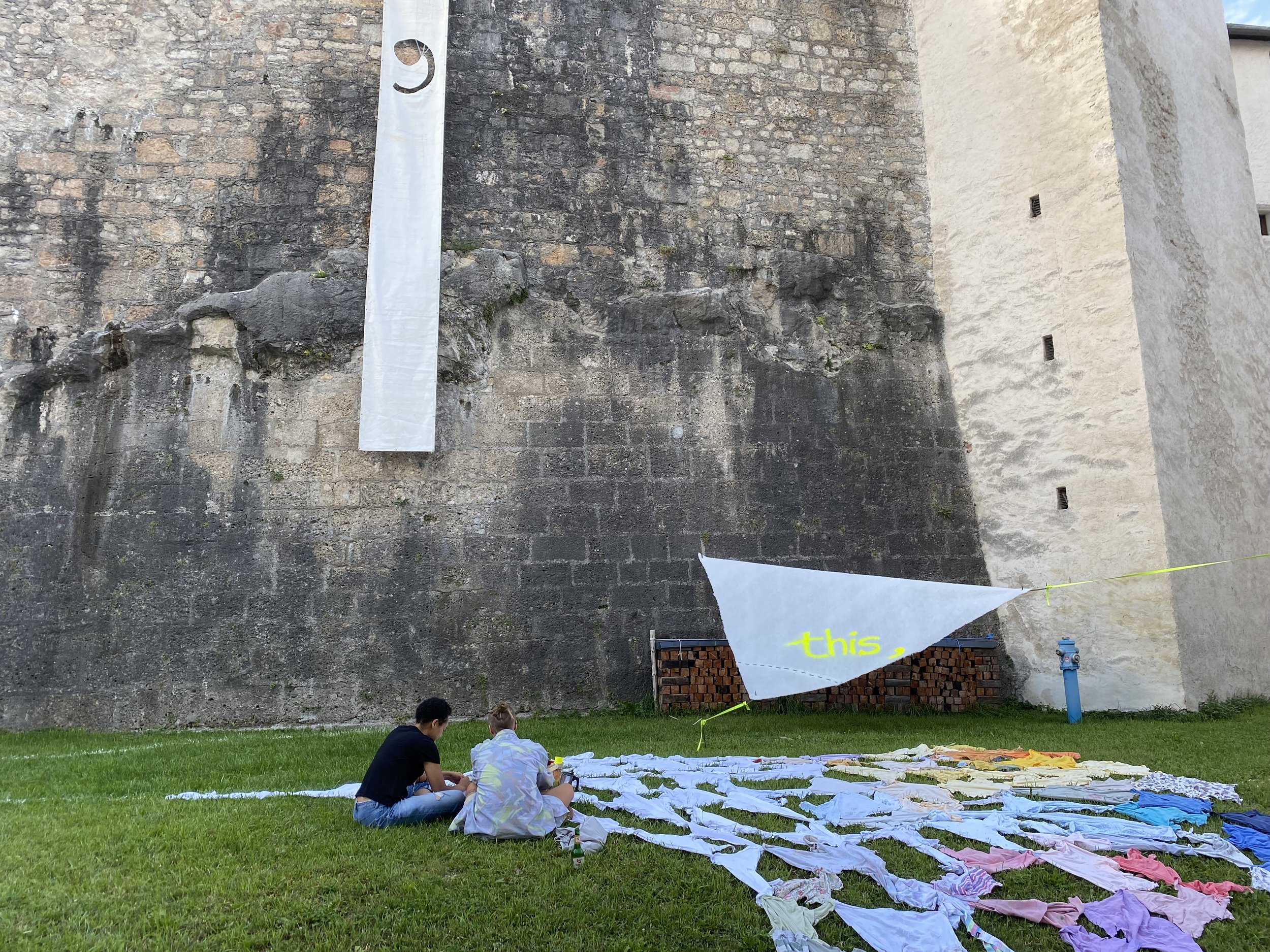
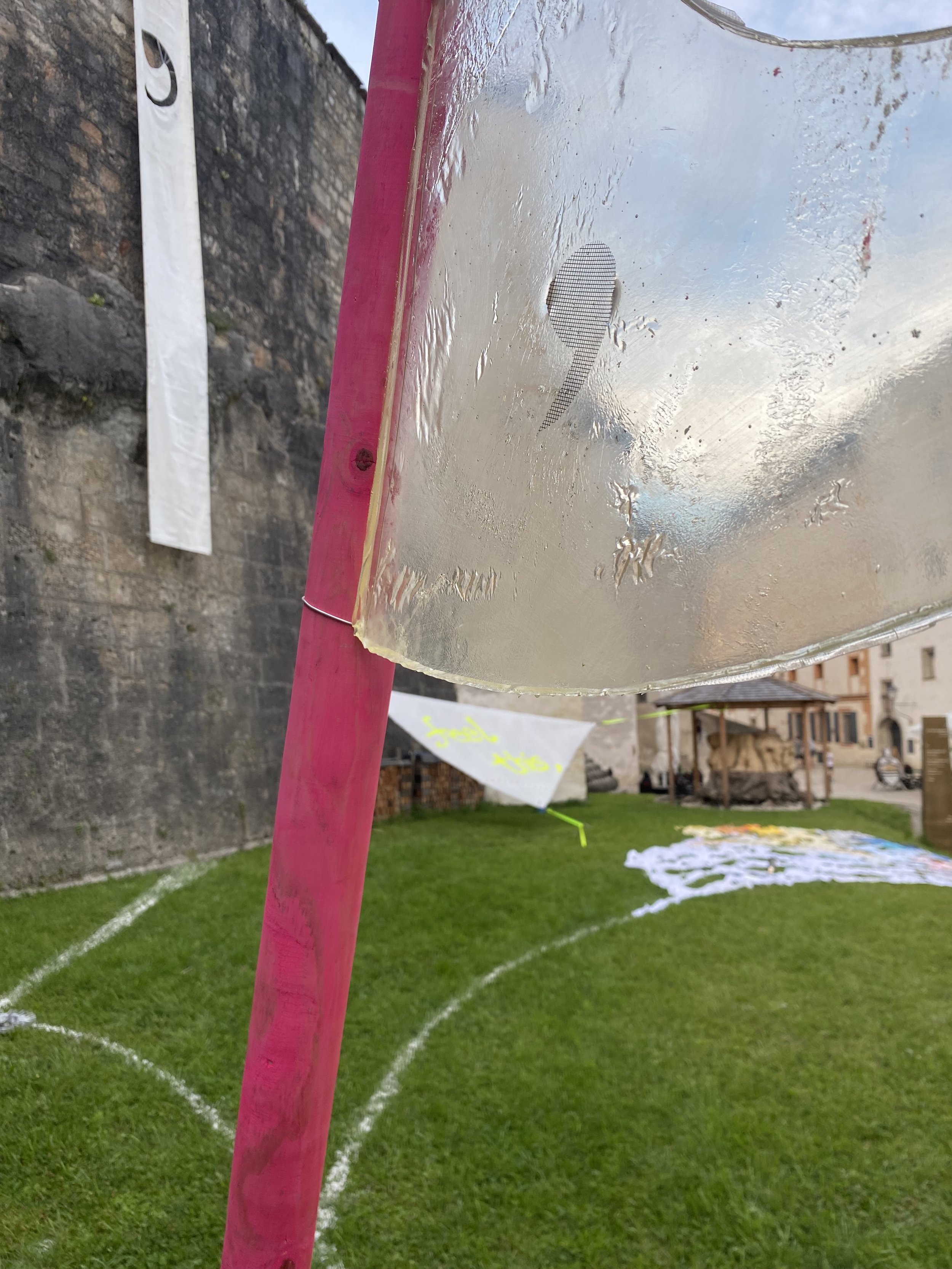
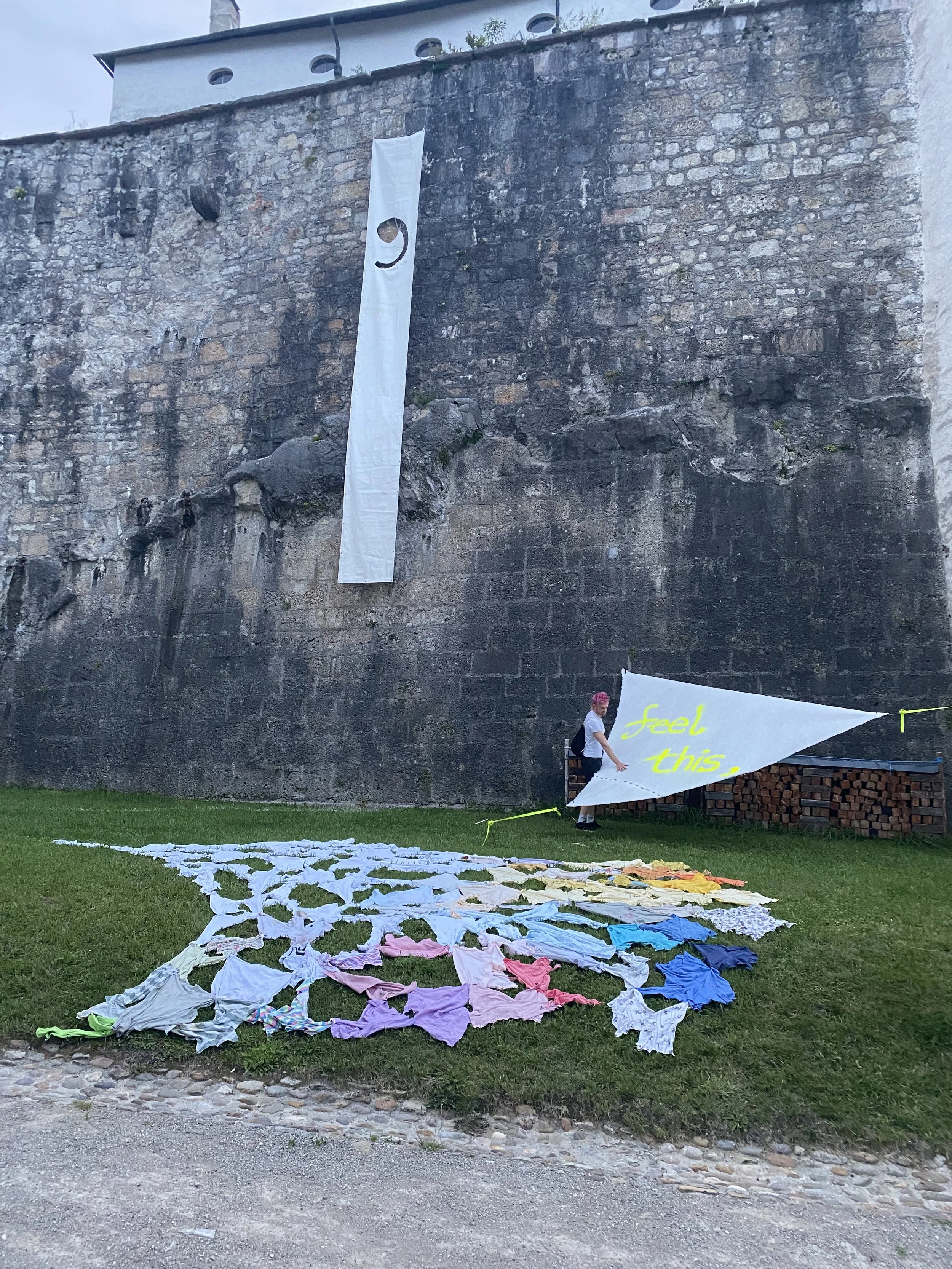

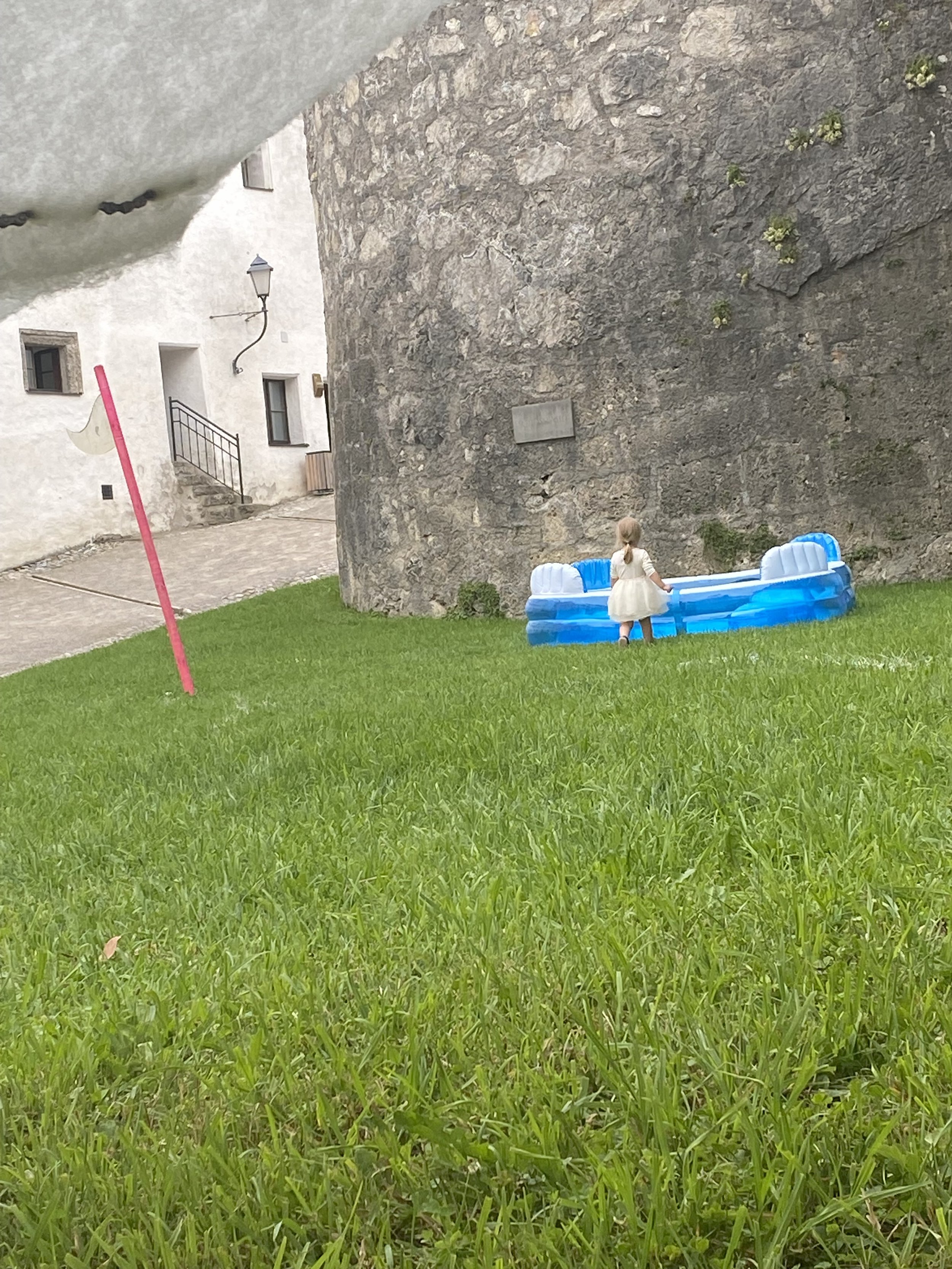
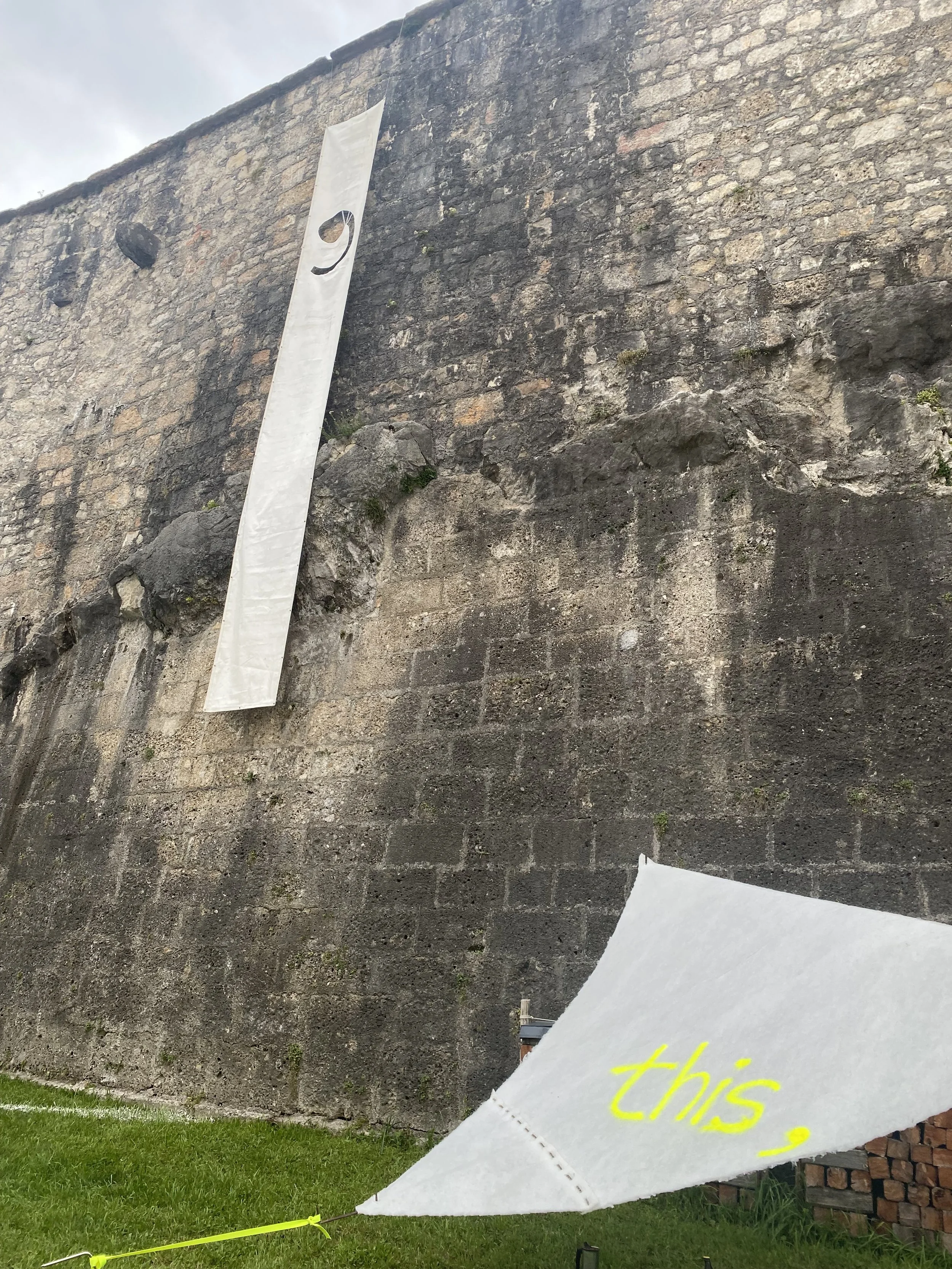
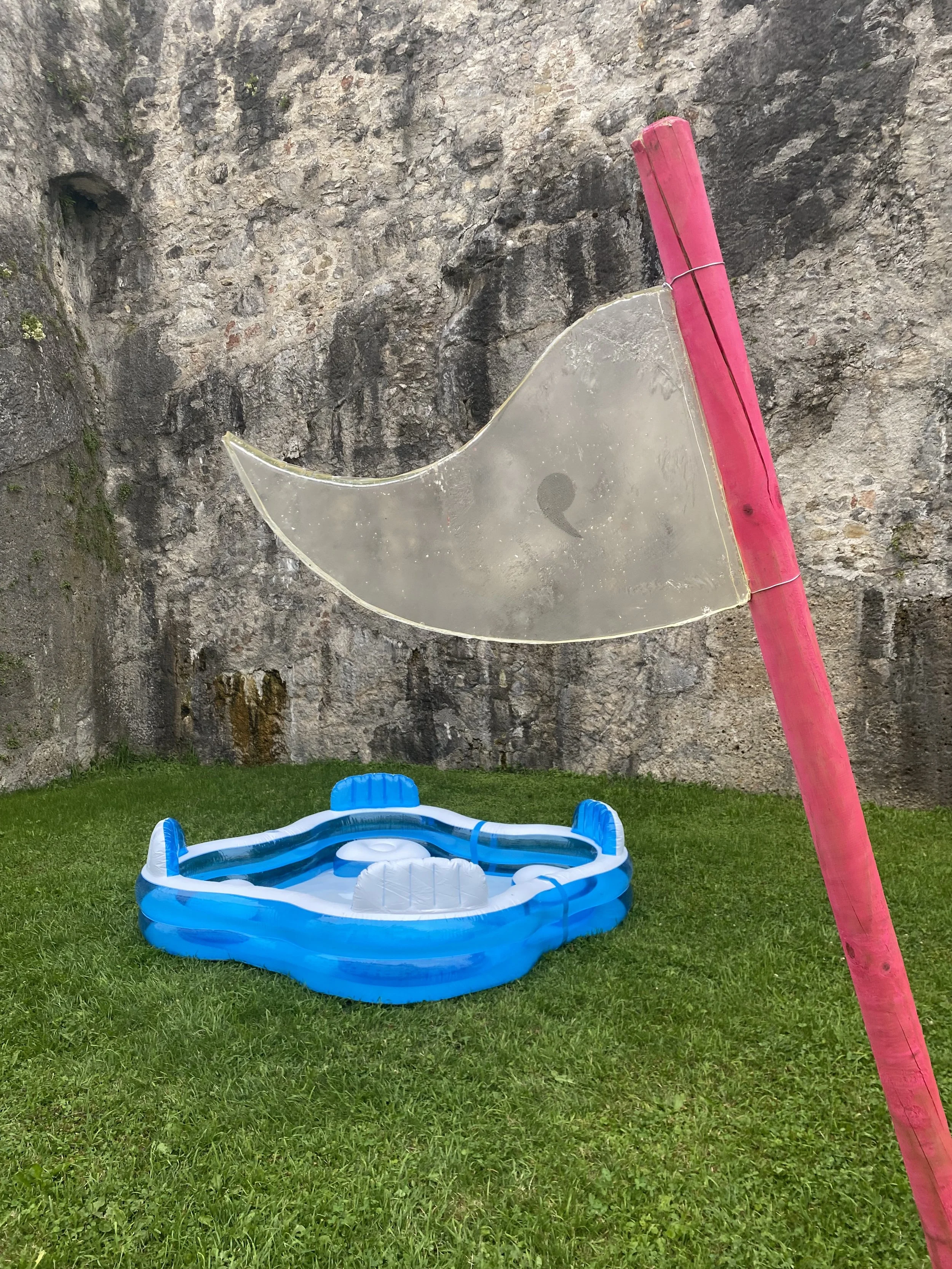
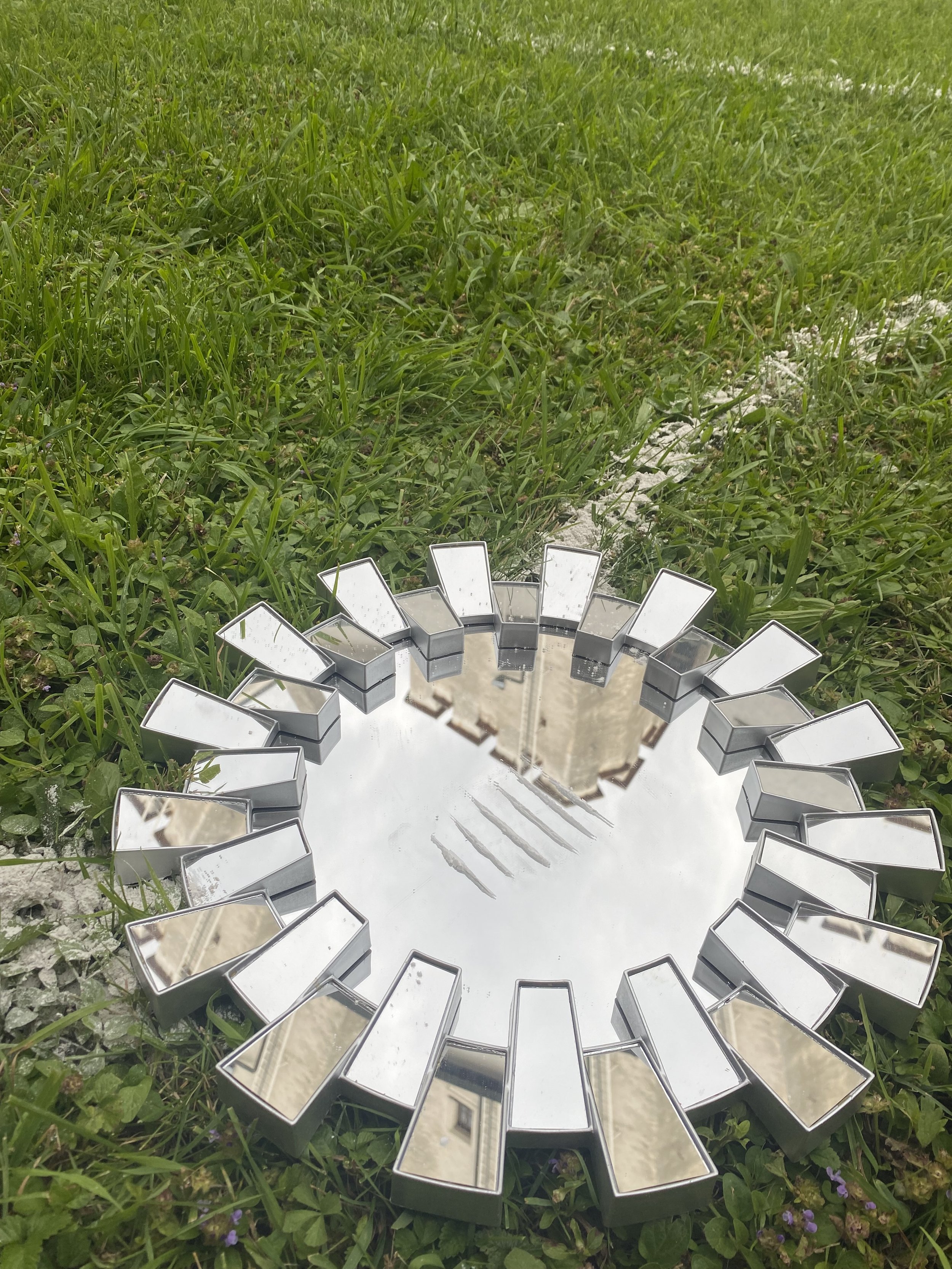
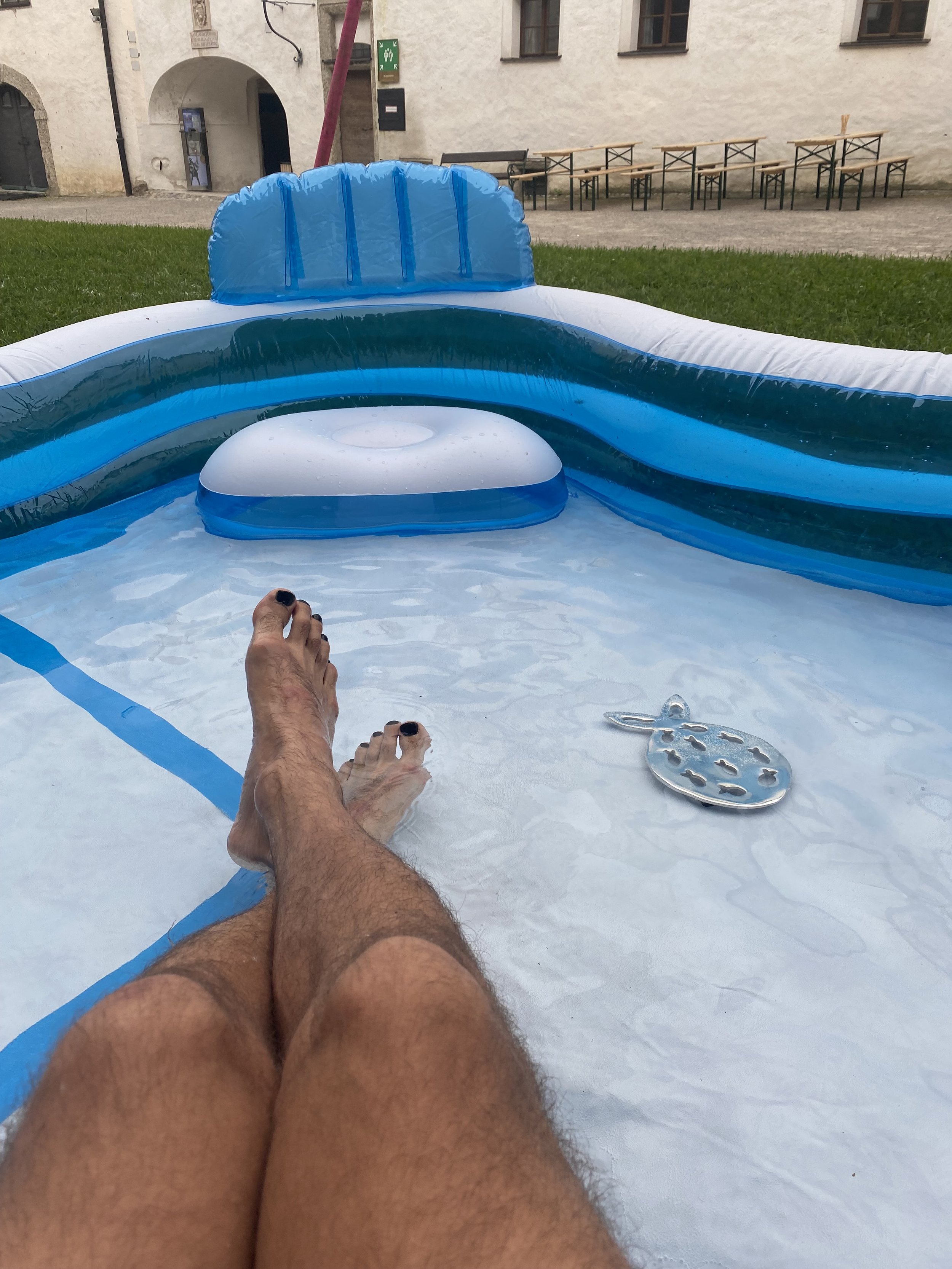
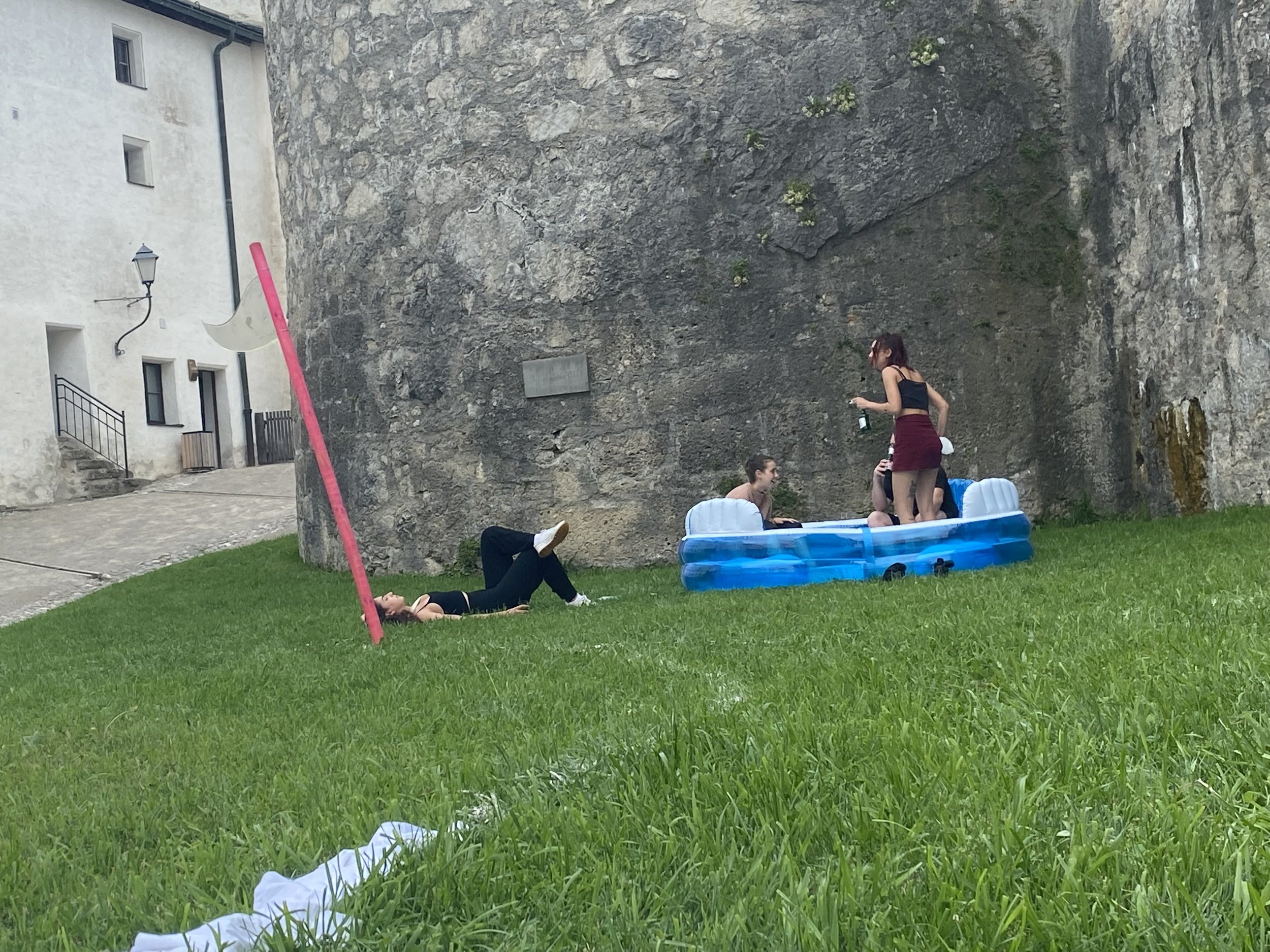
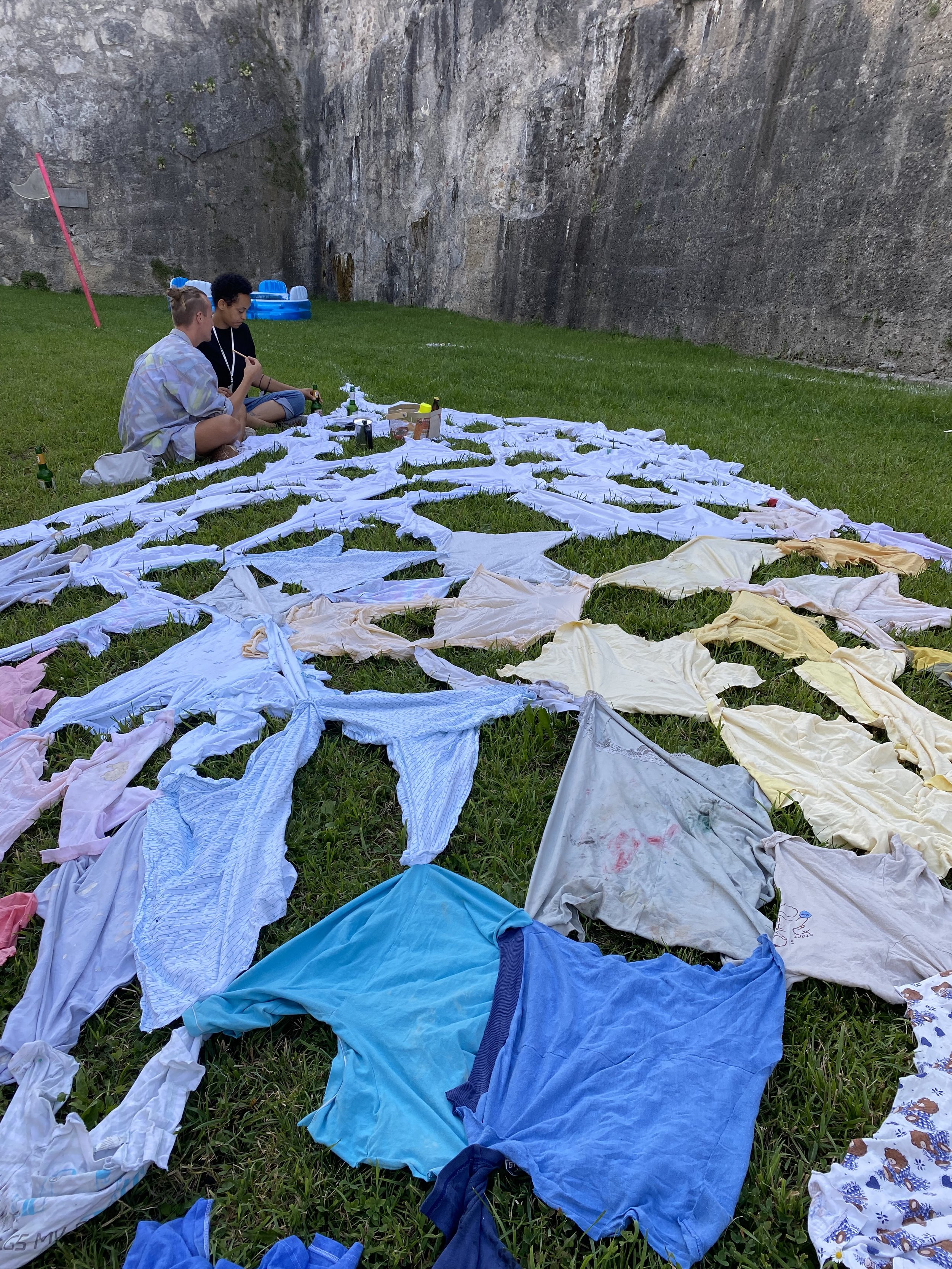
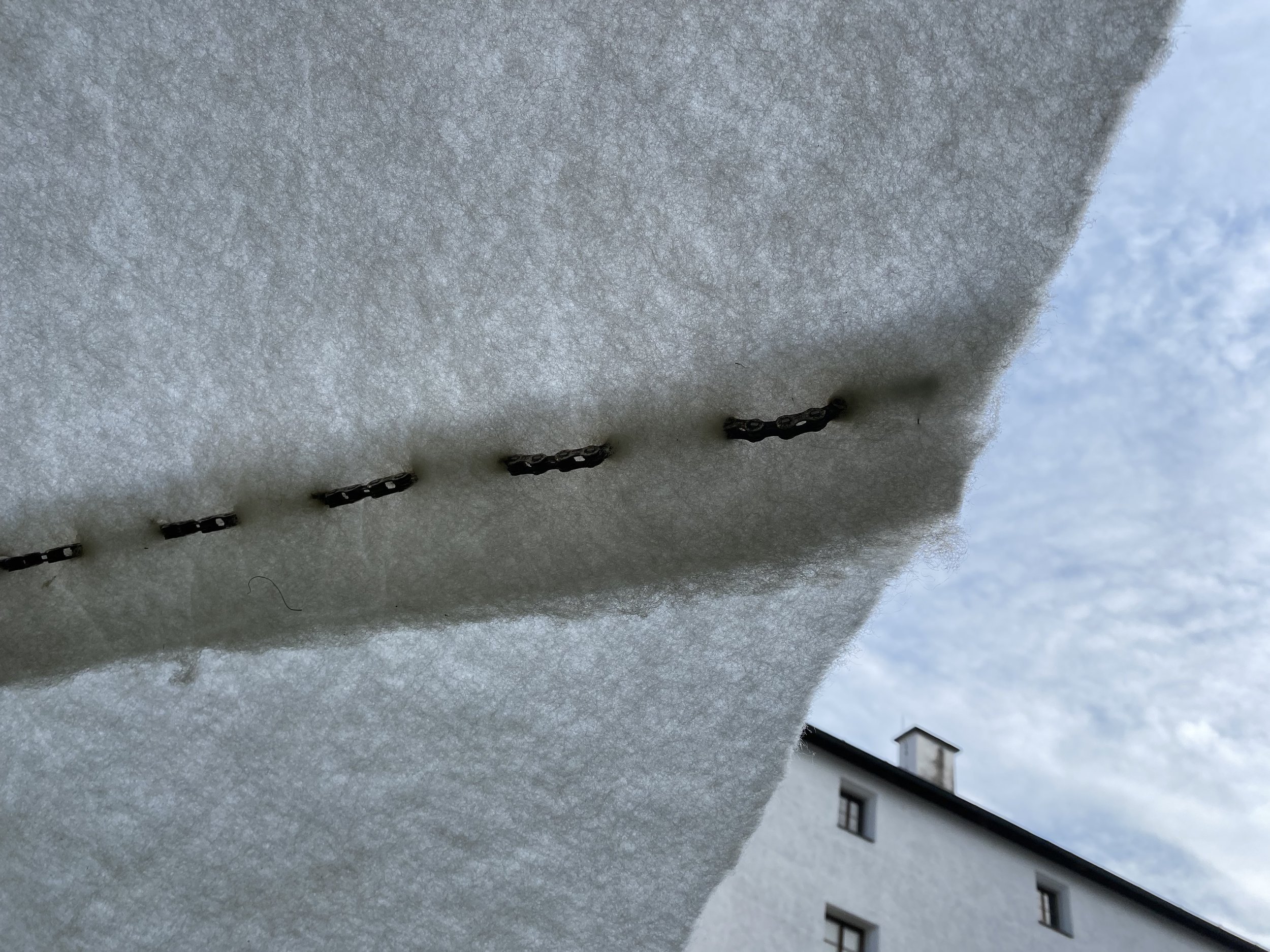
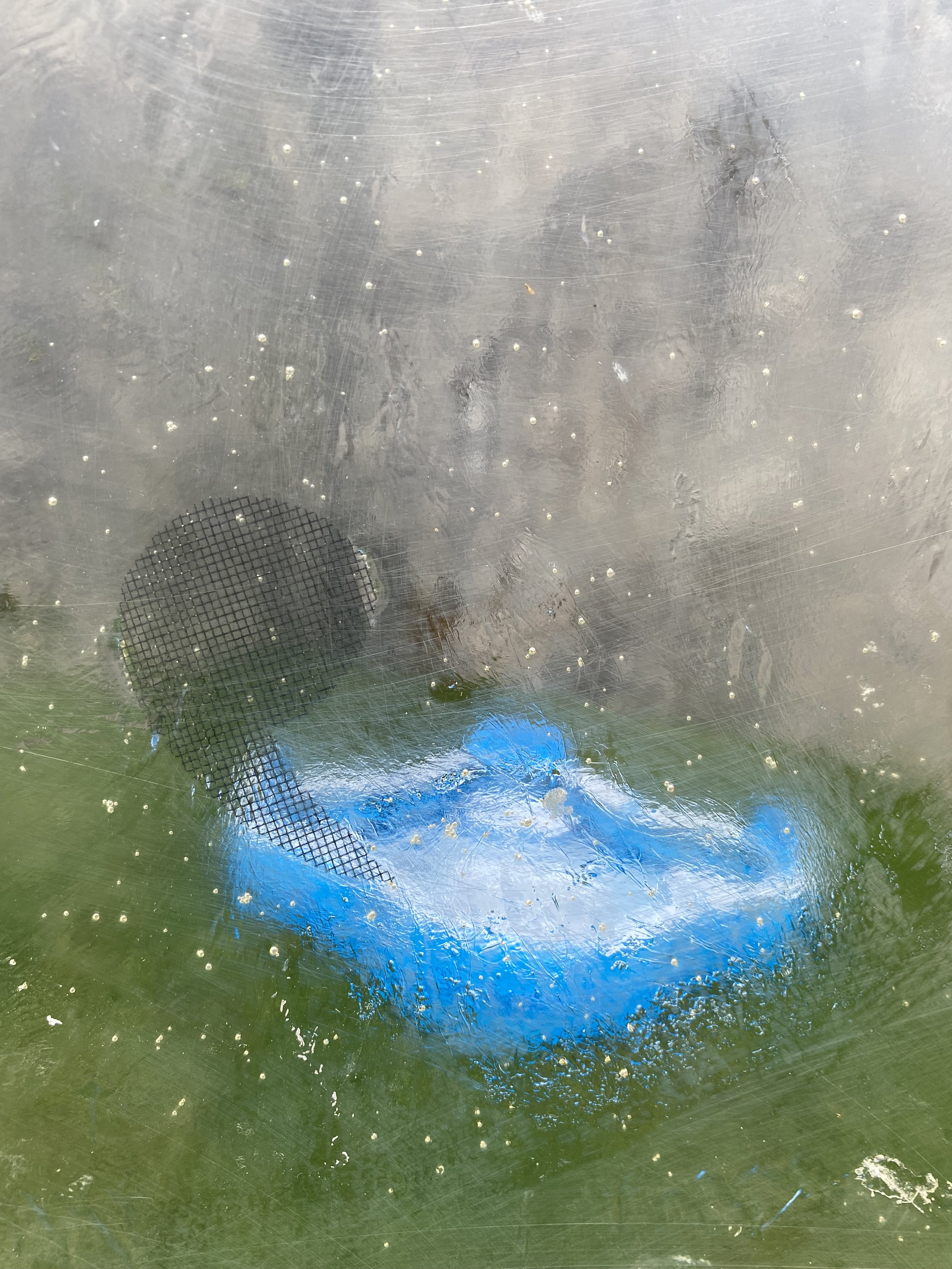
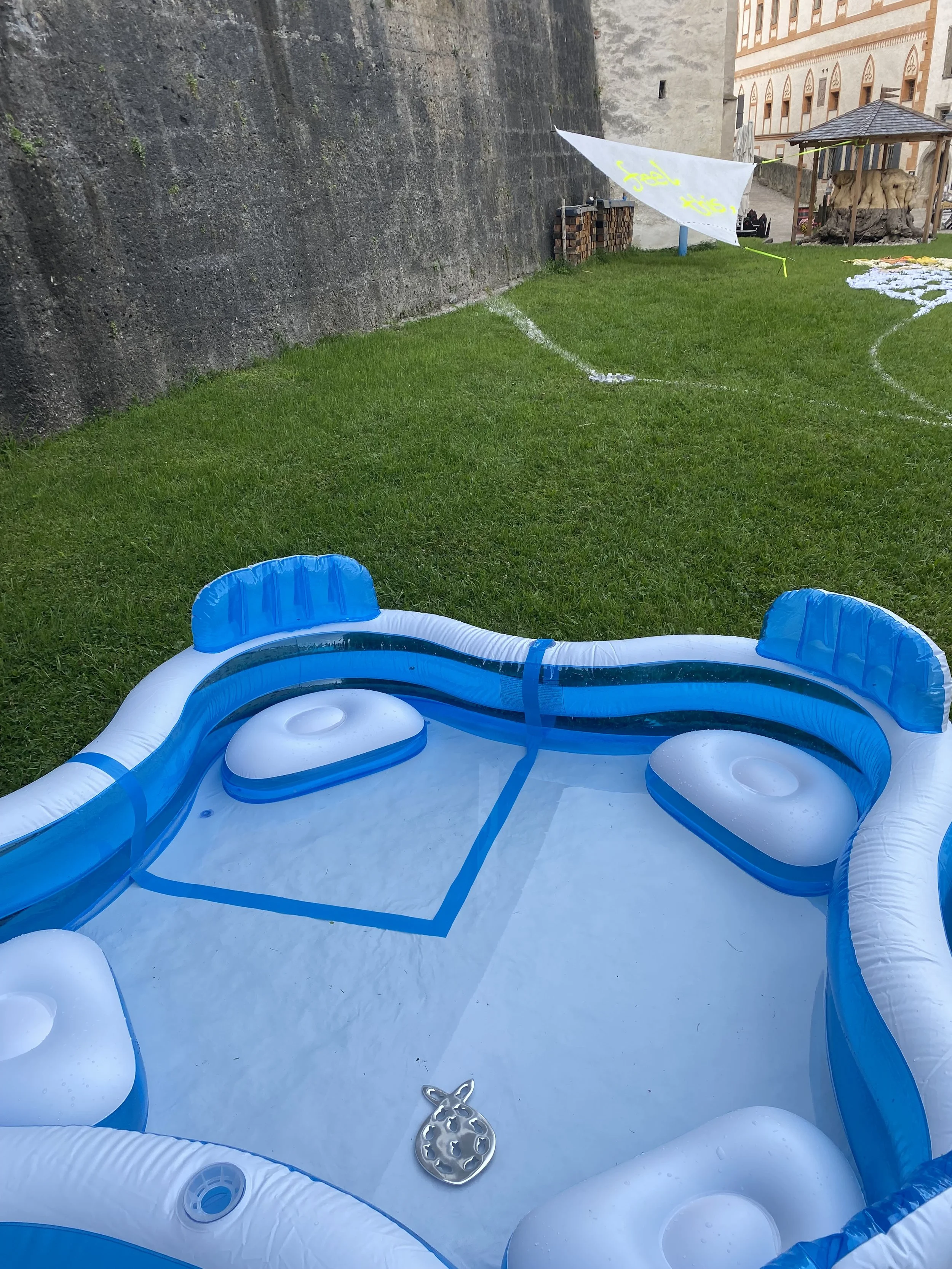
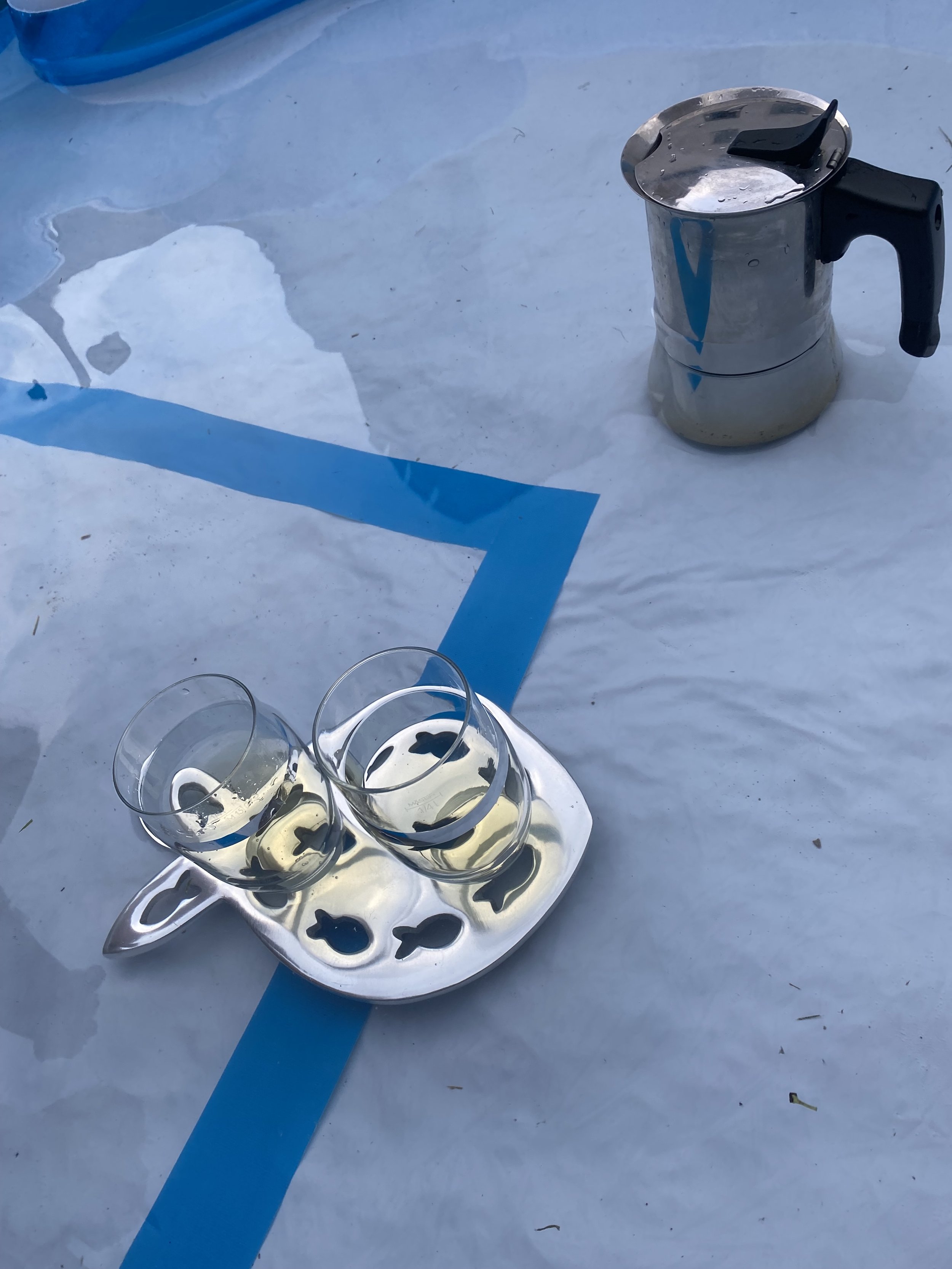
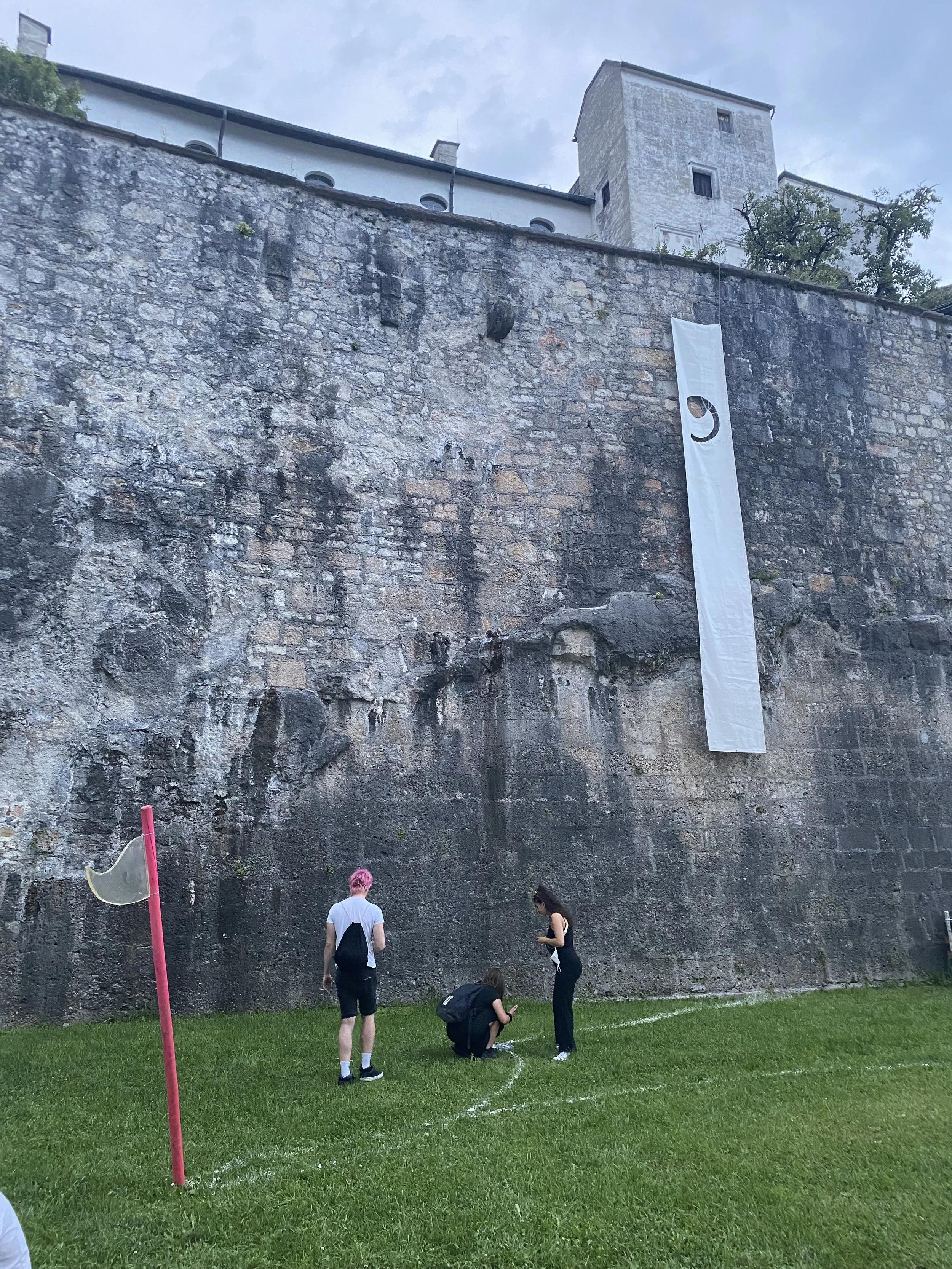
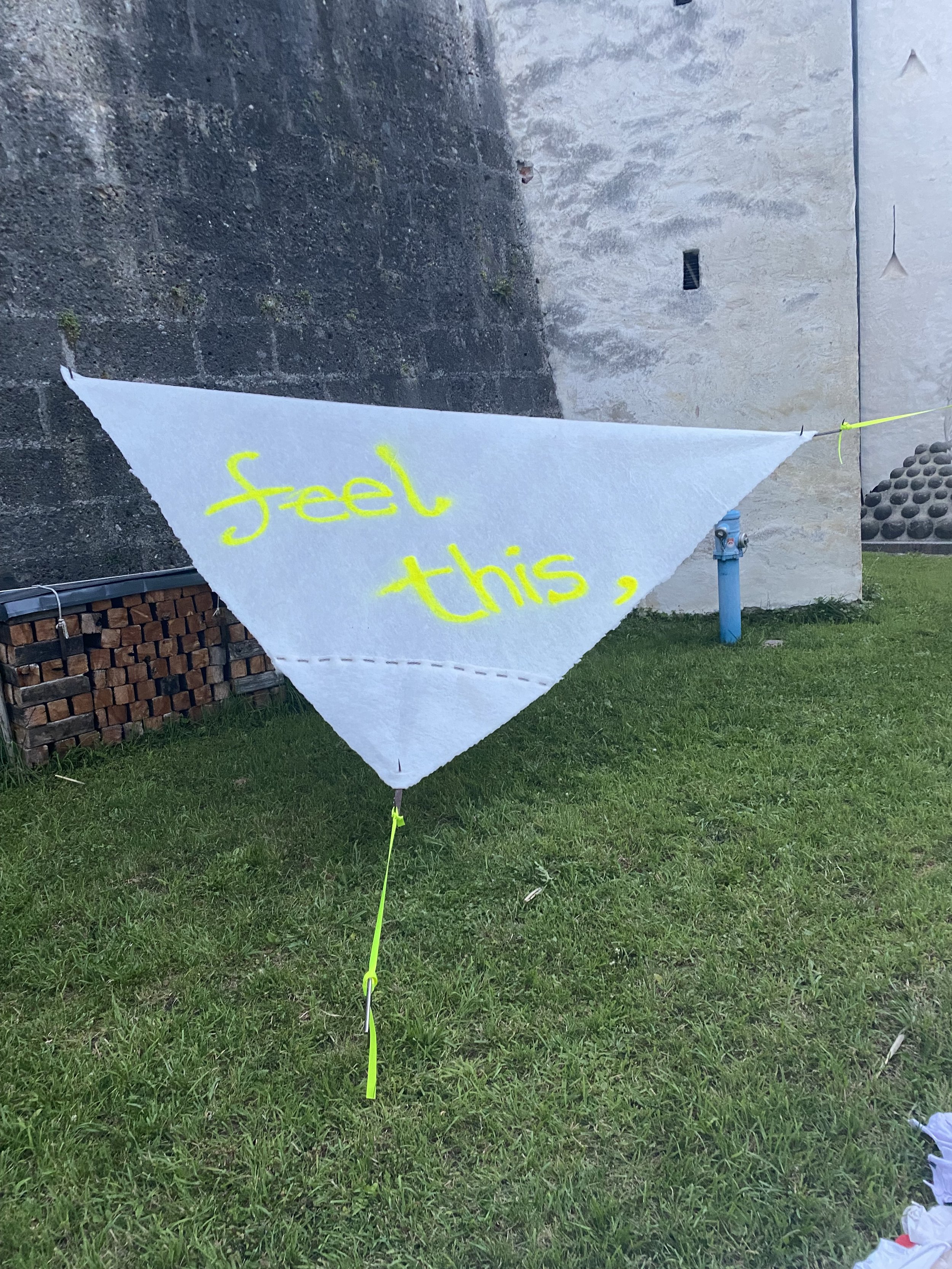
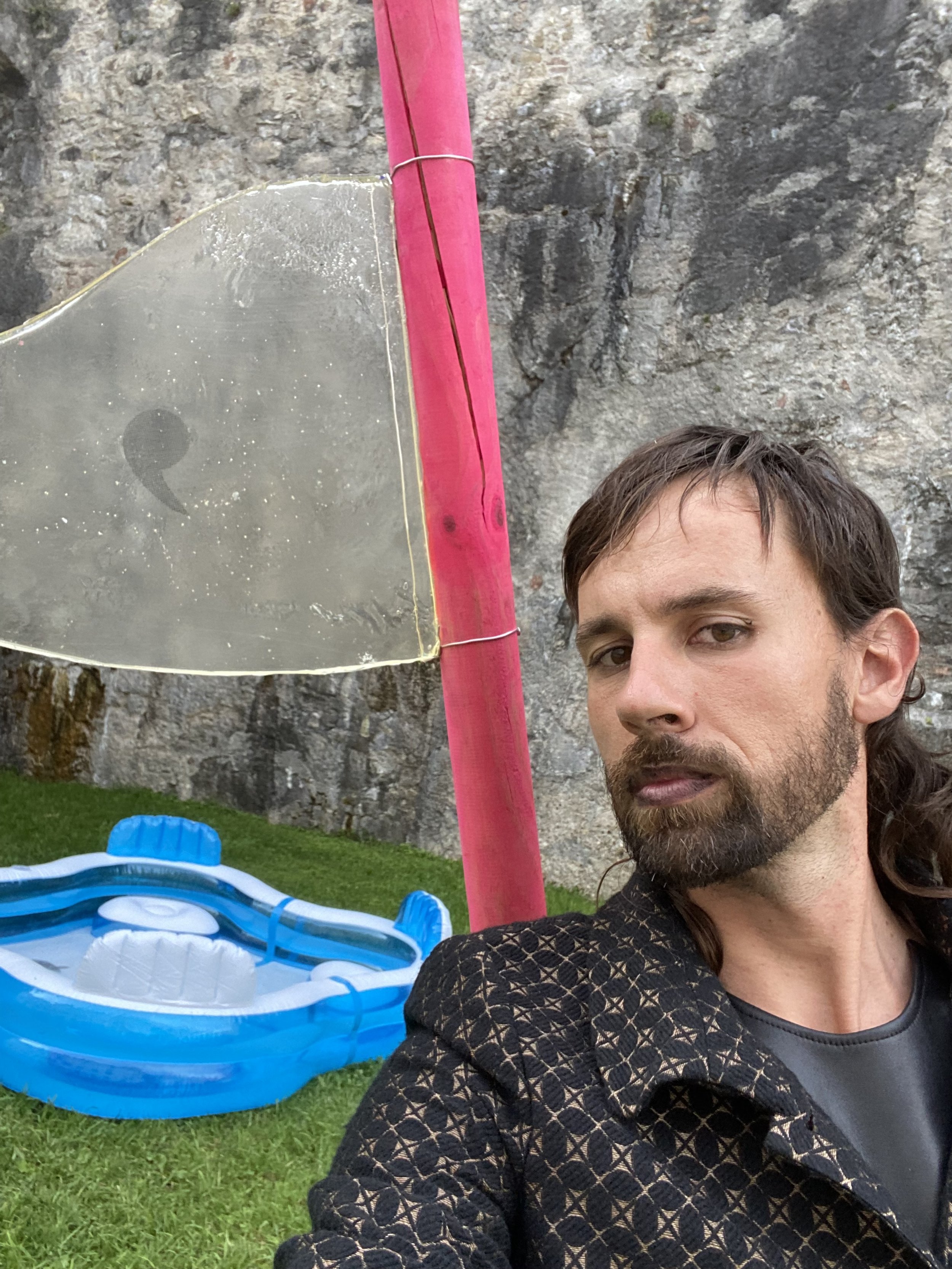
this queers image.
this queers beliefs.
this queers goals.
this queers wisdom.
this queers text.
this ,
COMMA [/ˈkɒmə/] is a participatory installation that elevates the agency of punctuation, specifically of commas, to a queering device. Portrayed as a shape and as a force, the comma is here activated to redirect narratives and bend linearities towards a queered writing of collective futures.
COMMA is a site-specific work, installed on the peripheral wall of the Salzburg fortress. The work invites the spectator to enter the patch of grass and the installation space, and to engage in manual collective activities such as sawing, stitching, pool hanging in shallow water, nail polishing, and drug taking as in ‘sharing lines’.
During the exhibition, the artist performs the Cross-Bencher, a character drawn from spatial design studies (Markus Miessen) who tends to use communal spaces, both physical and conversational, in unconventional ways hence deploying unexpected queering strategies. The work also refers to the conclusion of the book Cruising Utopia, in which queer writer Muñoz invites the reader to “come take ecstasy with me.” Not (only) as an act of substance-induced transcendency, but (also) in the etymological sense of being outside of the normative self, in order to detach from dominant fear-induced narratives and to rewrite them, in a playful communal ritual of transformative embodiment.
Concept, performance and installation by Matteo Marziano Graziano
comma was developed and realised under the mentorship of installation and visual artist Flaka Haliti, within the frame of her course “Spatial Hijacks by Sculpture: the Politicization of Space” held at the Summer Academy of Visual Arts 2021.
INTERWALLS
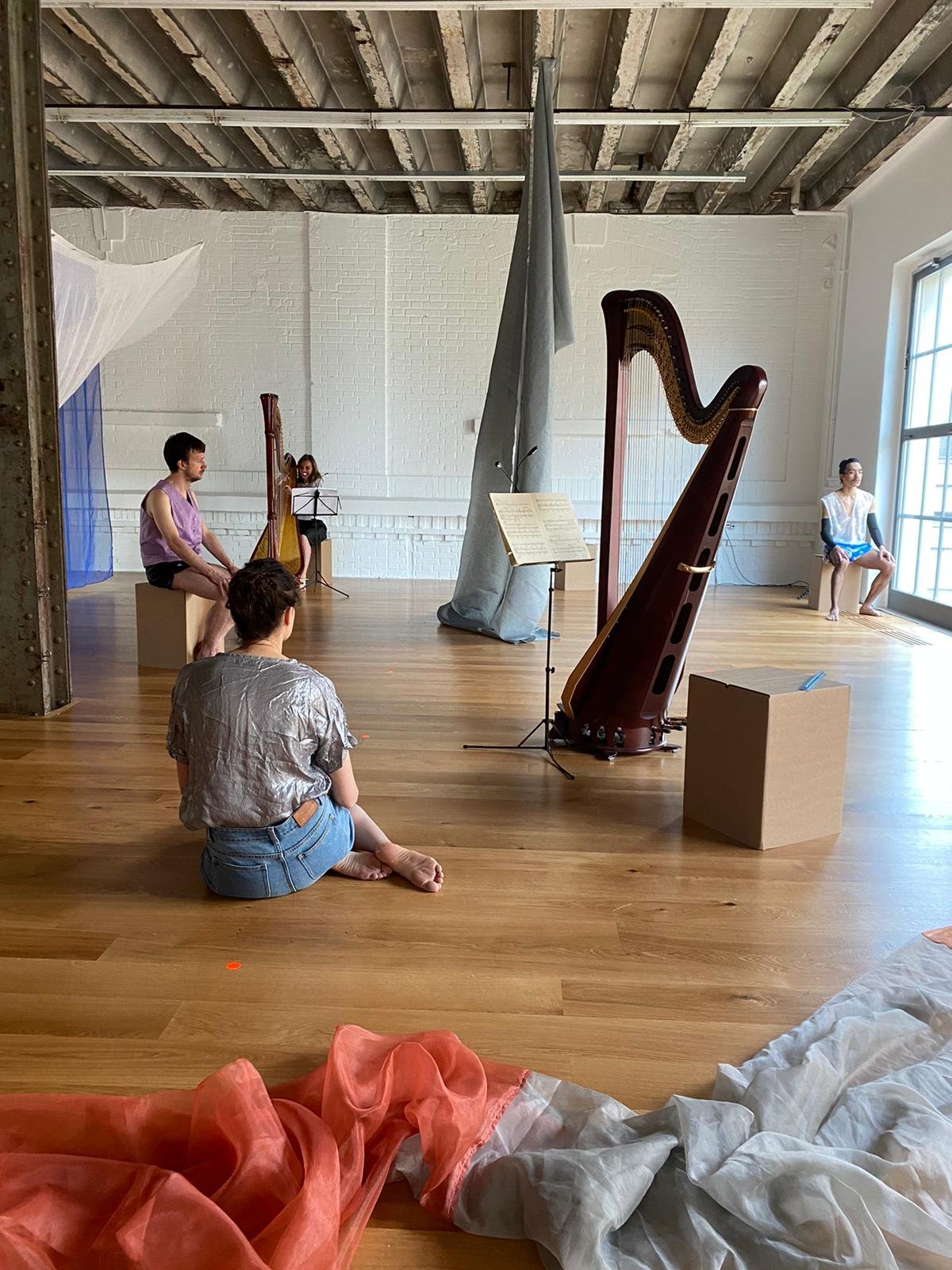
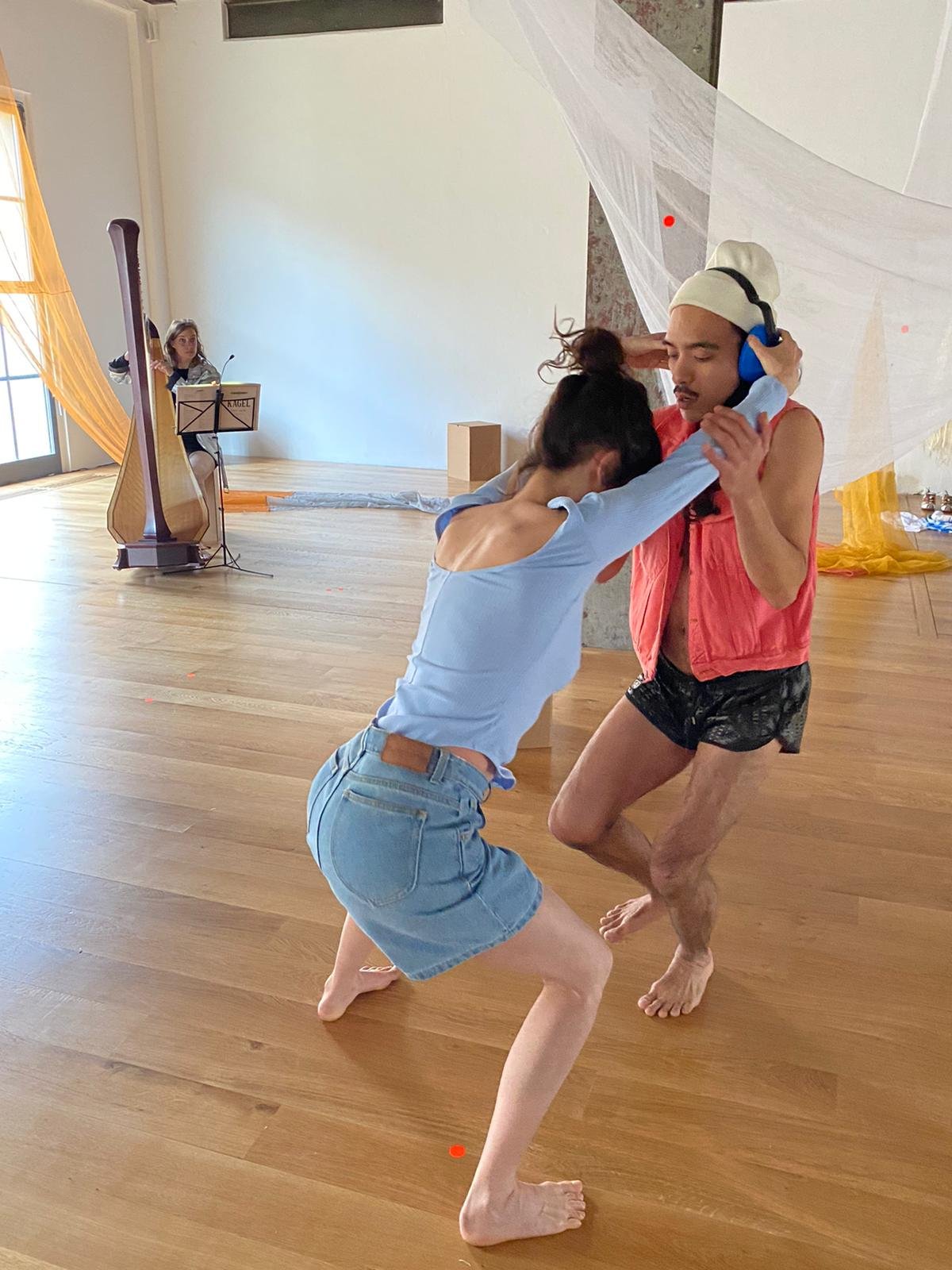
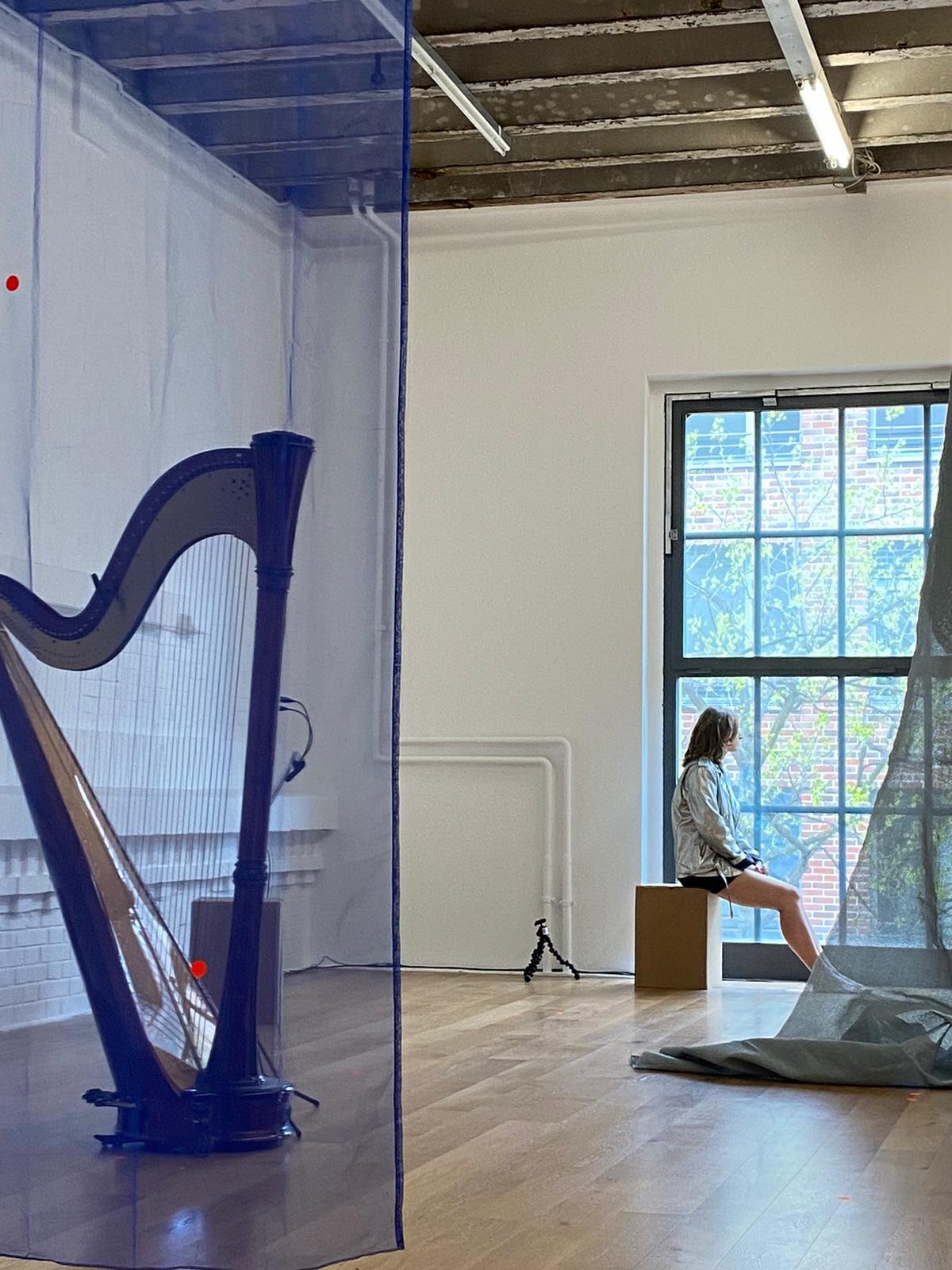
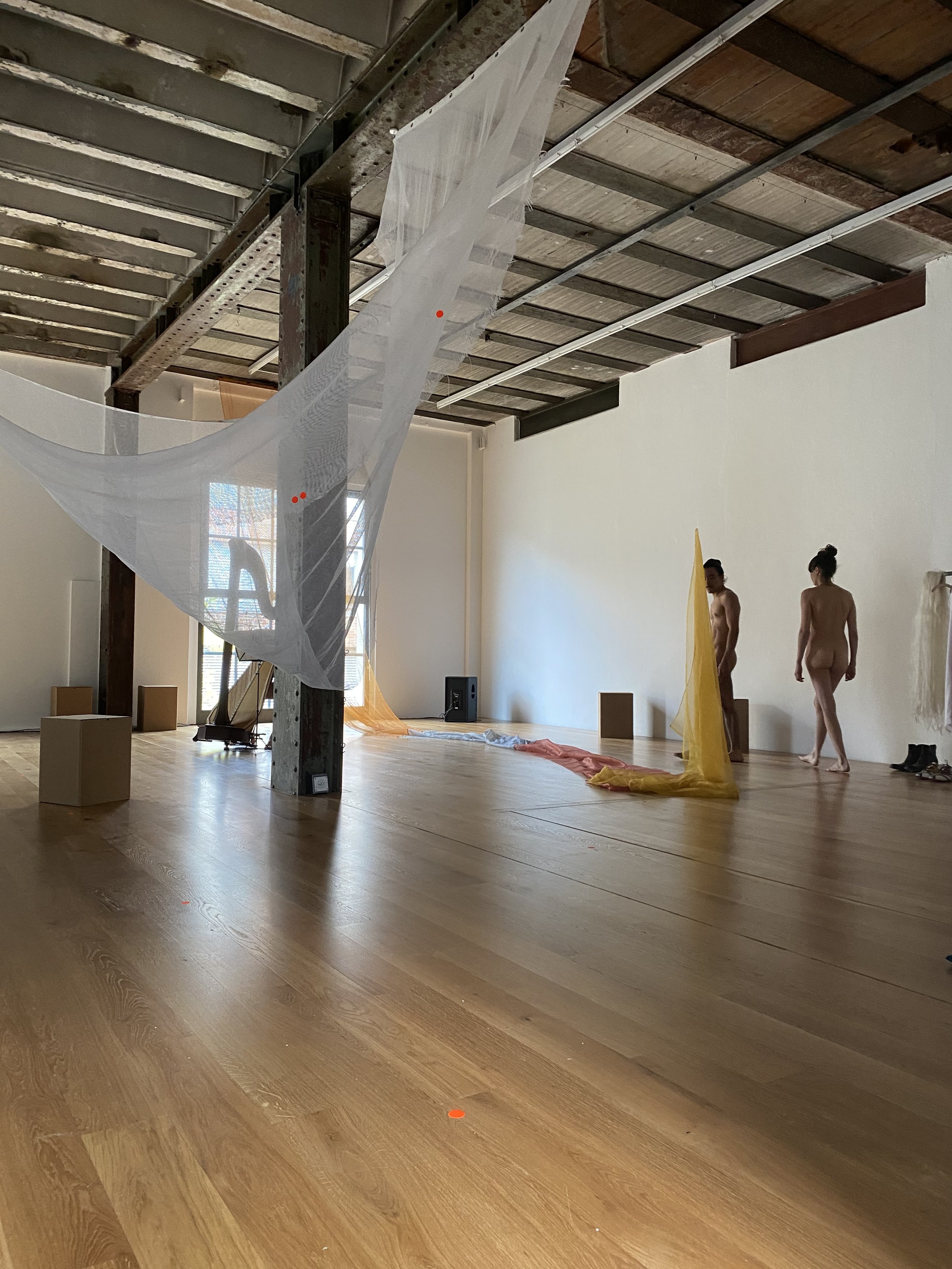
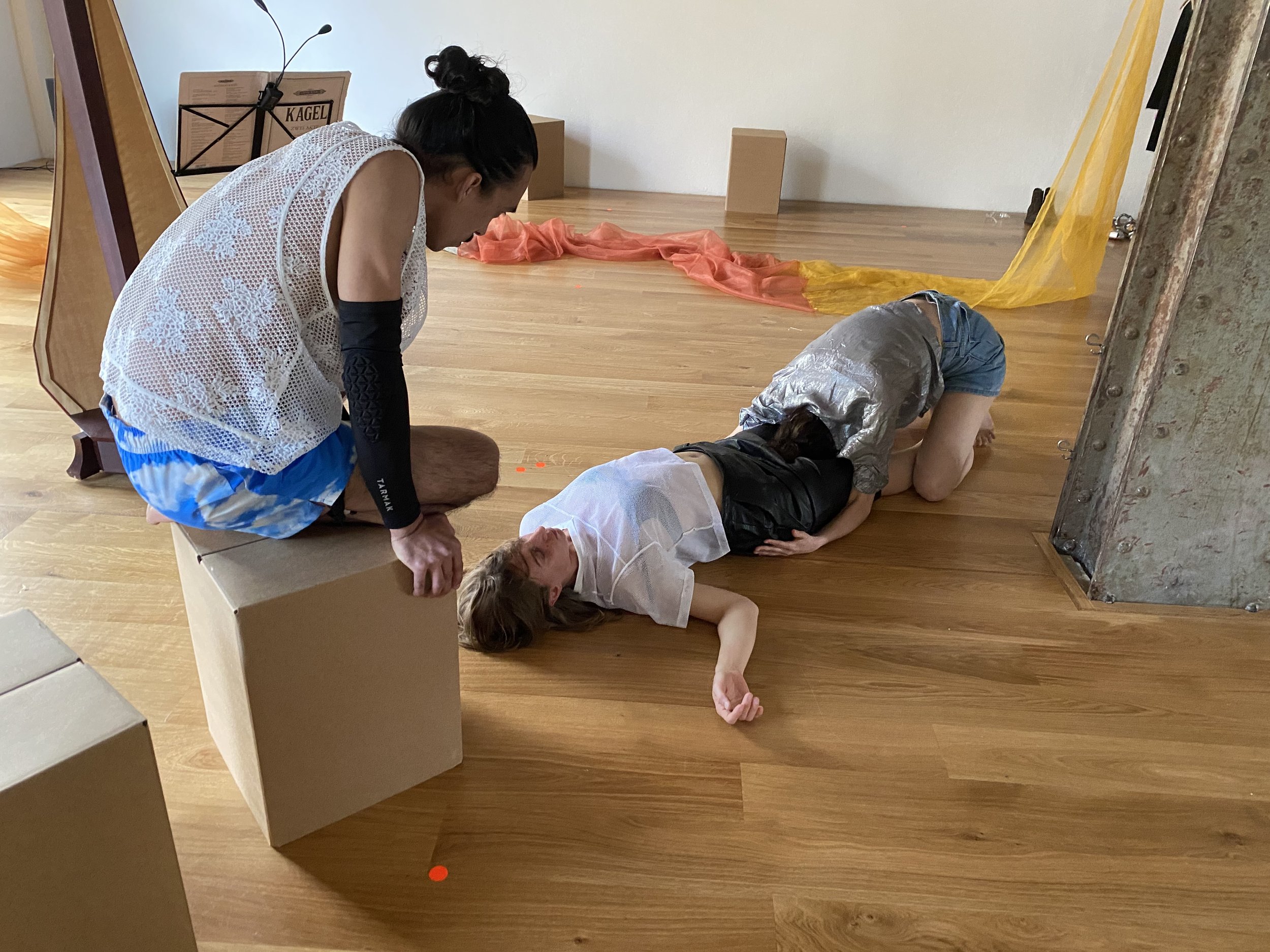

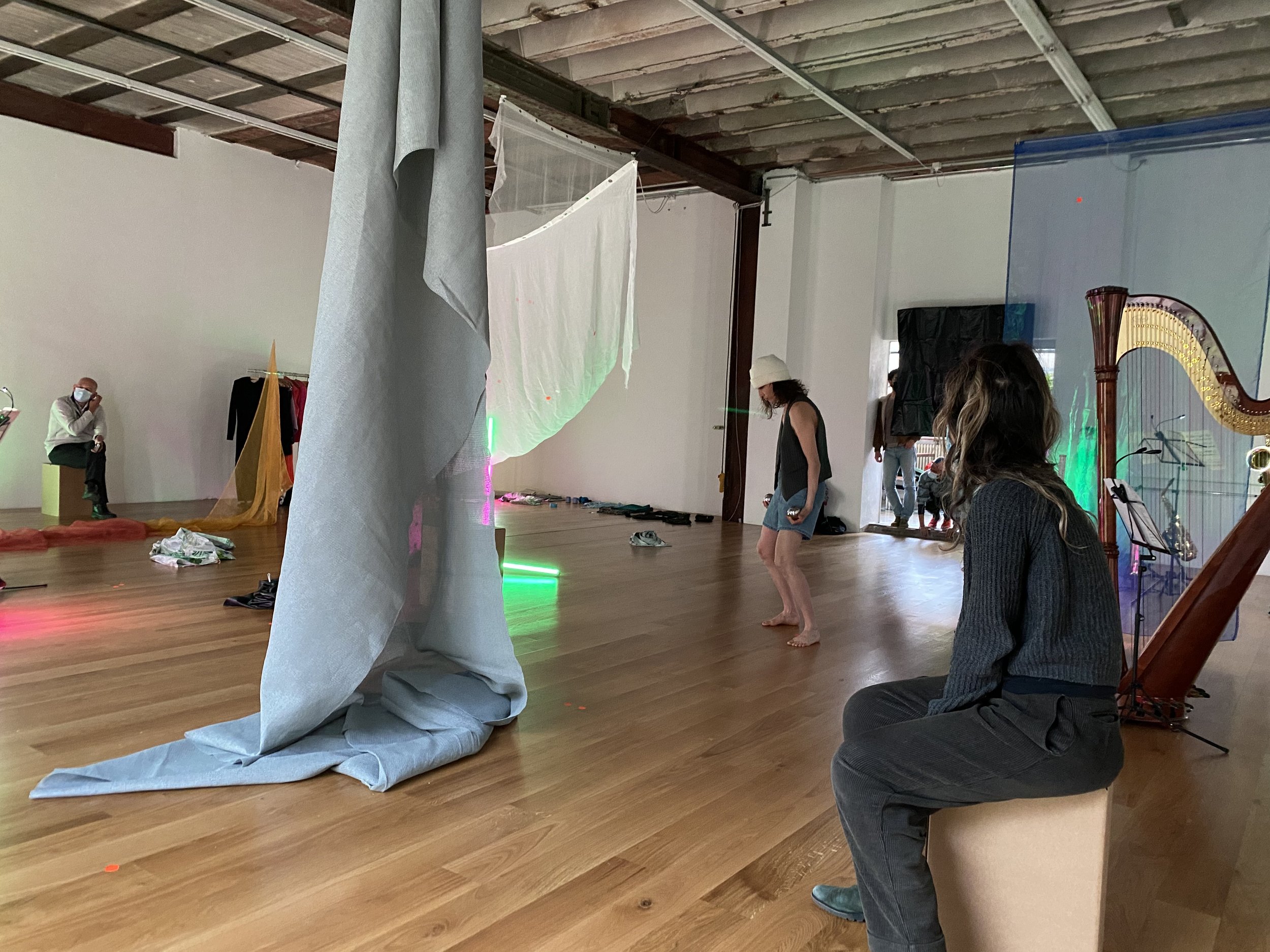
with and by Lyllie Rouviere, Daniel Staaf, Estelle Costanzo, Kevin Juillerat, Matteo Marziano Graziano.
INTERWALLS is about space, time, body, harp and saxophone. It is a durational performative installation in which artists from different disciplines have worked together departing from two pieces of contemporary music with a performative score: Two Acts for harp and saxophone by Mauricio Kagel (1988) and Fidélité for a female harpist by Georges Aperghis (1983).
How does the room activate when someone is watching? Can desire change the music? Which masculine and feminine limits are touched here? Which roles and gender dynamics are confused? Which volatile forces play a role and are visible through the bodies? With these questions the collorating artists have entered the process of this performative installation, in order to challenge such aesthetic matters, finally rejoinin with the audience after the lockdown.
Interwalls is kindly supported by the Sulger Foundation, the Fondation Oertli Foundation and the Fondation Nestle pour l’Art, as well as the KASKO, space for current art performance and education. KASKO is kindly supported by the canton BS Stadt & GGG Basel.
ORBIS TERTIUS
ORBIS TERTIUS is an immersive sound walk through the architectural complex of Aufbau Haus in Berlin Kreuzberg. It is inspired by the short story Tlön, Uqbar, Orbis Tertius by Jorge Luis Borges. Audience is invited in a labyrinthine journey, encountering situations and characters which seem to bend the laws of Reality, and the perception of them.
